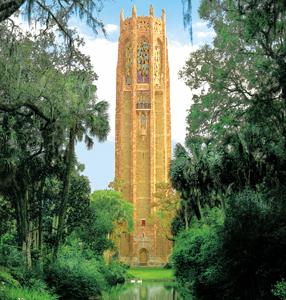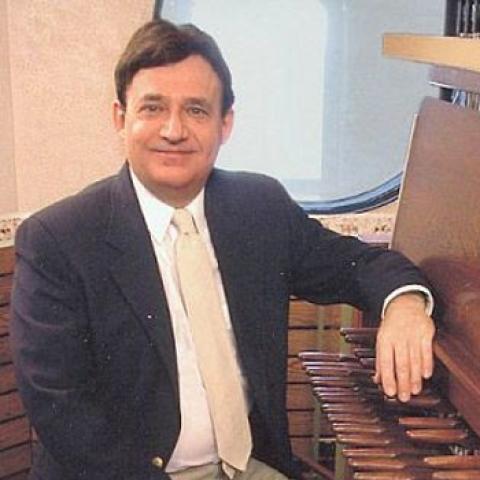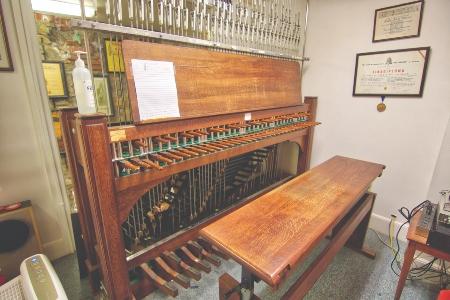The Netherlands Carillon monument, located in Arlington, Virginia, next to the Arlington National Cemetery and Iwo Jima Memorial, was a gift from the Netherlands to the United States in gratitude for their liberation during World War II and Marshall Plan aid. A Dutch press officer, Govert Verheul, had dreamed up the idea of giving the United States a carillon at a time when the administration was searching for an appropriate present for their generous benefactor. The subsequent “Bells for America” committee solicited donations from Dutch people, provinces, businesses, and organizations for the carillon. Queen Juliana announced the gift to the United States on her state visit to the country in 1952. While the bells were cast only one year later, the carillon would not be installed and dedicated until 1960.
The carillon and tower were designed to showcase Dutch culture and society. The instrument was provisioned with forty-nine bells cast by three different Dutch bell foundries: Eijsbouts, Petit & Fritsen, and Van Bergen. The bells were exquisitely inscribed and decorated to represent varying divisions of Dutch society. The lowest were dedicated to Dutch territories, the middle to professions and professional organizations, and the highest to the youth. Eugenia van den Grinten-Lücker, Louis Meijs, and Gerard van Remmen designed the bell ornamentation. The rhyming couplets centered on Dutch life and aspirations were composed by poet Ben van Eysselsteijn. The modernist tower was designed by Joost W. C. Boks and is bordered by Dutch royal lions by Paul Koning and forty-nine tulip beds to match the number of bells.
The carillon project was delayed and marked with problems from the beginning. Dutch carillonist Ferdinand Timmermans and Belgian Kamiel Lefévere performed for the official presentation of the carillon to the United States on May 5, 1954, Liberation Day for the Netherlands. The carillon was housed in a temporary structure in West Potomac Park until its relocation in its permanent tower in 1960. By that time, the United States had its own growing carillon culture, so Charles T. Chapman, the carillonist of the Luray Singing Tower memorial carillon, Luray, Virginia, inaugurated the instrument during its formal dedication on May 5, 1960.
In 1963, Frank Law, also carillonist at the Valley Forge Carillon, became the first director carillonneur of the instrument and tirelessly advocated for its performance and care. By 1970, though, the carillon had already fallen into disrepair. Thanks to Law’s advocacy and publicity from The Washington Post, the National Park Service allocated the necessary funds to screen off the open belfry from birds, refurbish the transmission system, and replace the keyboard.
A full renovation did not happen until 1994–1995, which was conducted by Eijsbouts. Two Dutch businessmen, Berend Boks, son of the tower’s architect, and Kersen de Jong, spearheaded the fundraising campaign that gathered donations from Dutch businesses and the government. One of the primary aims was to re-tune the smallest thirty-six bells to sound more concordantly together, since the three bell foundries did not produce bells of the same casting and tuning quality. Other improvements in the renovation included yet another new keyboard aligned with the North American keyboard standard, new transmission system, new clappers, and a new automatic playing mechanism controlled by a computer, replacing the obsolete tape-playing mechanism.
In 1995, the year of the fiftieth anniversary of Dutch liberation, Prime Minister Wim Kok presented a fiftieth carillon bell to President Bill Clinton. The newest Eijsbouts bell was now the smallest, and it featured two lions to represent the Netherlands and a bald eagle for the United States, along with the message of “Freedom / Friendship.” The newly expanded and renovated instrument was inaugurated by Washington, D.C., carillonist Edward Nassor and Dutch carillonist Jacques Maassen on May 5, 1995. Nassor, Law’s student, had become the director carillonneur after Law’s death in 1985. The liberation commemoration and celebration was a lavish two-day affair, including a ceremony honoring fallen soldiers at Arlington National Cemetery, the performance of the musical Bells of Freedom composed for the occasion, and a dinner and dance for over 1,000 Dutch businessmen and American veterans and diplomats.
In 2010, the tower was closed to visitors due to safety issues. Water damage had noticeably corroded bolts and the exterior paint, raising concerns about the tower’s structural integrity. By 2015, the automatic-playing mechanism had broken, ceasing the daily noon and 6:00 p.m. playings. Because of these issues and the upcoming seventy-fifth anniversary of the Dutch liberation, an international fundraising team comprising both governments, the Netherlands-America Foundation, and corporate donors raised funds for the latest renovation to the tower and carillon.
The work began in October 2019, when all fifty bells were removed and returned to the Eijsbouts bell foundry in the Netherlands for another round of re-tuning. Three new bells were added, one low and two high, and the bells have been re-keyed at concert pitch, rather than transposing down a minor third. The range extends down to a low G, making the instrument an American grand carillon, and thus continuing the Dutch tradition of expanding and upkeeping their gift according to the prevailing standards. Other improvements include a World Carillon standard keyboard, new clappers, updated automatic-playing mechanism, and new playing cabin. The three new bells were dedicated to extraordinary Americans in the twentieth century: General and Secretary of State George Marshall, Civil Rights leader Martin Luther King, Jr., and First Lady and activist Eleanor Roosevelt. The three new bells were exhibited in Washington, D.C., in May 2021, and the entire carillon was reinstalled in June 2021. The project had been delayed by a year due to the Covid-19 pandemic. The tower will undergo repairs until autumn 2021, when an inauguration recital is scheduled. Edward Nassor continues as the director carillonneur of the Netherlands Carillon and will lead the regular concert schedule.
The author consulted three sources for this profile: Tiffany Ng’s doctoral dissertation, “The Heritage of the Future: Historical Keyboards, Technology, and Modernism” (2015); Diederik Oostdijk, Bells for America: The Cold War, Modernism, and the Netherlands Carillon in Arlington (2019); Edward Nassor, “A Culture Inscribed: Inscriptions and Reliefs on the Bells of the Netherlands Carillon, USA,” The Bulletin of the Guild of Carillonneurs in North America 70 (2021).







